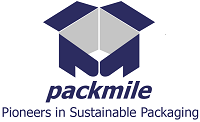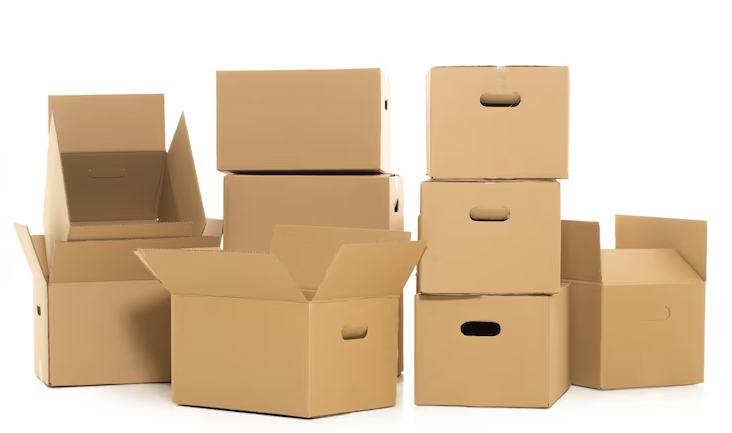One of the areas you may focus on if you are an eCommerce business owner looking to make your company more environmentally friendly is Packing. Over time, traditional packaging material has resulted in more pollution than anything else, so switching from conventional packaging to eco-friendly packaging has become the need of the hour.
Eco-friendly Packaging: The Basics
It is a type of packaging in which only those packaging materials are used that are not detrimental to the environment and do not harm our planet in any way. For a packaging material to become eligible to be called eco-friendly packaging, it should be either compostable or biodegradable or something that can be recycled or reused. From eco-friendly tape to eco-friendly packaging material, there are many options.
The Reasons That Have Made Eco-friendly Packaging a Necessity
Everything comes in packaging, from edibles and toys to confectionary items and cosmetic products. The amount of waste we produce through packaging is more than the product itself. Most of these traditional packaging materials are not recycled and reused, and they pollute the environment.
- On an annual basis, packaging contributes to almost 30% of the US waste, and this number will keep increasing over time if we don’t switch to green packaging solutions.
- More than 36% of the plastic produced worldwide is used for packaging only, including single-use plastic products, and 85% of this plastic packaging ends up in landfills. They never go through any recycling process, and thus they are never reused.
- The traditional packaging method drains almost 10% of the input cost of any FMCG company. Conventional packaging materials are never reused and never recycled; the loop of buying and wasting packaging materials always continues.
- The price of recycling traditional packaging waste is increasing with time. It has increased by almost 2% in one year, and if we continue on the same path, it will keep proliferating.
- Of the 34.5 million tons of plastic waste generated almost every year, only 3.1 million plastic is recycled, and the rest proves to be noxious for the environment.
Problems Caused by Plastic-based Packaging
Many companies still need to start using paper tape or other eco-friendly packaging material since they depend on plastic. Here are some facts that might make you aware of the dangers of using plastic for packaging-
- When millions of tons of plastic packaging are thrown in landfills, it never decomposes; instead, it stays there for more than 400 years, gradually wreaking havoc on the environment, nature, and living organisms.
- Apart from looking dirty and a complete mess, these plastic packaging slowly releases noxious chemicals when they react with specific elements that are naturally present in the air, land, or sea. This is what amplifies the catastrophe.
- People are now burning plastic to dispose of quickly since plastic takes up much space and needs to be compressed. But again, this releases a vast amount of toxins in the air that ends up in our lungs.
- Apart from wreaking havoc on living organisms, many times, huge piles of plastic have been collected on the mouth of streams and caused changes in current or dangerous flooding.
The Benefits of Using Eco-friendly Packaging Materials
1) Reduce Carbon Footprint
All eco-friendly packaging materials like paper tape are made of biodegradable, recycled material, which minimizes the wastage of natural products for production. Even the production procedure is more efficient when using eco-friendly materials. Because of this, there is less carbon footprint than there otherwise would have been.
2) Multipurpose
Eco-friendly packaging, such as eco-friendly packaging tape, serves other purposes besides protecting our environment. As a result, several industries can employ a single sustainable packaging solution. There is a sustainable packaging option available for every product, whether you intend to package food, cosmetics, or automobile parts.
3) Biodegradable
In addition to reducing the carbon footprint and saving the environment, eco-friendly packaging, like eco-friendly packaging tape, has positive effects even after it has been used for shipping. All the eco-friendly packaging solutions you will find in the market are recyclable and biodegradable; thus, they don’t adversely impact the environment.
4) Improve Brand Image
Customers are now more concerned about the increasing pollution. They have a stronger preference for companies that use eco-friendly packaging because they believe that these businesses care about the environment in addition to selling goods and turning a profit. Eco-friendly packaging options like paper adhesive tape give you a competitive advantage.
Some of the Most Popular Green Packaging Materials
Green packaging, sometimes referred to as sustainable packaging, uses materials and manufacturing processes to reduce energy consumption and diminish the adverse environmental effects of packaging. Biodegradable and recyclable materials are frequently used in green packaging solutions in place of materials like plastic and Styrofoam. Additionally, green manufacturing techniques take measures to cut down on energy usage and greenhouse gas emissions.
1) Reusable Packaging
Reusable packaging is both cost-efficient and environment-friendly. Reusable packaging may be wise due to its advantages in ecology, economics, and society. Companies can save money on raw materials, energy, and labor costs by repeatedly decreasing the need to produce single-use packaging. Reusable packaging is more robust and long-lasting than single-use packaging since it is made for repeated usage. Because reusable packaging can be used numerous times, businesses that invest in it can save money on packaging disposal and purchase costs. Reusable packaging is also linked to improved product security and decreased damage. Reusable containers can also be stored and transported more affordably thanks to their better strength for stacking when they are full and a collapsible or nestable design when they are empty.
2) Recycled Packaging
This is another popular type of packaging. All such things give wasted plastics another chance to be helpful. When recycled materials are used for packaging, you save natural resources and minimize the amount of plastic in landfills. Many giant companies are already using recycled packaging.
3) Molded Paper Pulp Packaging
A recycled packaging material made to be recycled again is called the molded pulp. The pulp fiber material you may have encountered likely served various functions during its lifetime. Because of the material’s composition, all pulp products can be recycled in any household or public recycling facility. Furthermore, it will completely decompose in 4-6 weeks if it escapes into the wild.
Molded pulp is a clean, renewable, biodegradable raw material typically created from recycled waste-based paper or cardboard that is based on wood or bagasse sugarcane. Pulp is quickly establishing itself as the best environmentally friendly option for huge, unique, heavy, small, and fragile products, despite being a little more recent compared to some of the more enduring paper packaging materials. There are countless design options, including end caps, trays, plates, bowls, clamshell containers, and much more.
4) Organic Materials Packaging
It is often created from natural resources and is safe for the environment and all living things. The environment is protected by preventing the packaging trash from building up over time.
- Packaging Made of Mushrooms
Mushroom-based packaging has been successful in commercial packaging applications, even though it may sound more like an adventurous wrap you might find in a vegan restaurant. Agricultural waste is used in mushroom packing, which is held together by mycelium or mushroom roots. It is very environmentally friendly and biodegradable. Notably, many retailers have switched from utilizing Styrofoam to mushroom packaging.
- Packaging Made of Cornstarch
Businesses can benefit significantly from using biodegradable packaging materials, mainly when replacing traditional plastics. The primary benefit of using cornflour packaging is that it is renewable because corn is commonly accessible and reasonably priced. Cornflour packaging is a biodegradable alternative to plastic and polystyrene (Styrofoam). It can be utilized in many ways and is offered in transparent and opaque materials.
- Packaging Made of Seaweed
Seaweed is the market leader in edible packaging materials. It can be made into packaging without chemicals and is naturally abundant in vitamins and fiber. Due to the biodegradability of seaweed, even if the package ends up in a landfill or the ocean, it will decompose safely and without causing any harm. When specific biodegradable polymers are combined with seaweed, packaging materials may have a sustainable and superior advantage over traditional ones. Their main benefit is the ability to make seaweed-based packaging materials edible without the use of adulterants or preservatives.
Choosing the Right Eco-friendly Packaging Vendor
- Always ensure that the vendor you choose deals with a long list of eco-friendly packaging materials, not confined to a couple of options. This will make the vendor your one-stop shop for all your eco-friendly packaging needs.
- Check the reviews and ratings of the eco-friendly vendor you choose. You can even ask for samples of their previous project and delve deeper into their work.
- Ensure that they have worked with companies similar to yours in the past. This will ensure that the vendor knows your industry-specific needs and that you don’t need to brief them much.



Leave A Comment